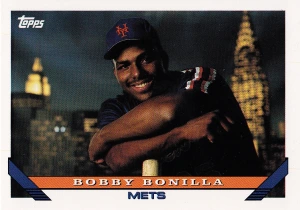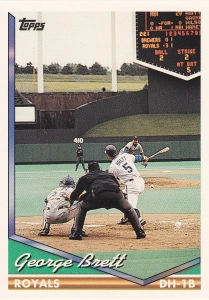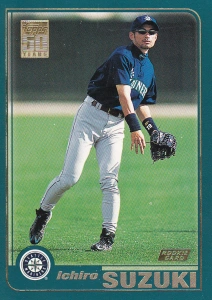Here are some of the more prominent cards and rookie cards, including the ’81 League MVPs:
As mentioned in an earlier post – here’s the main card I’m missing:
The next few scans are some of the other cards I liked the best, be it because of the picture, the player or historical significance. One thing I noticed in the ’81 set – I think it has significantly better than photography than the previous year’s set. The Dawson picture below is just, at least to me, a really good picture. I thought his ’80 Topps photo was one of the better ones, but like most of that set, it was a standard posed shot. The other cards are all great action shots. Now maybe they aren’t nearly as good as the pictures got in the 90’s and beyond, but seeing both Sutter as he releases the ball, and Tekulve with his unique follow-through is pretty cool. The Pacella card below was the first card I saw when opening the first pack of the wax box – he threw so hard his cap fell off!
Yet again – here’s 3 guys I think should be in the HOF. Definitely Murphy and Trammell. I could buy no Whitaker, but it’s a tough sell. And he should at least have been able to garner the 5% to stay on the ballot! Oester is one of my favorite players from when I was younger – a staple at second base for the Reds in the 80’s. The other cards are neat subsets – the McGraw pic is an iconic image from the Phillies championship, the Bench HR record was a really big deal, the Ozzie assist record is something I didn’t know about, and the Average leaders commemorates Brett’s .390 season.
The next scan is the all facial-hair team from this set, and the following are some other funny pictures from the set.
Buck Showalter would not have approved of these guys. I guess people did wear their hats backward before Griffey Jr.
I didn’t realize this guy was a player in the 80’s – I thought the term came from a much earlier time period.
According to Wikipedia (which means it must be correct, right?), the Mendoza Line is an informal term used in baseball for the threshold of incompetent hitting. Even though Mario Mendoza’s lifetime batting average is .215, the Mendoza Line is said to occur at .200, and when a position player’s batting average falls below that level, the player is said to be below the Mendoza Line. It is often thought of as the offensive threshold below which a player’s presence in MLB cannot be justified despite his defensive abilities.
The “Mendoza Line” was created as a harmless clubhouse joke amongst friends. “My teammates Tom Paciorek and Bruce Bochte used it to make fun of me,” Mendoza said in 2010. “Then they were giving George Brett a hard time because he had a slow start that year, so they told him, ‘Hey, man, you’re going to sink down below the Mendoza Line if you’re not careful.’ And then Brett mentioned it to Chris Berman from ESPN, and eventually it spread and became a part of the game.”
They also had a reference to this in an early “How I Met Your Mother” episode – the baseball and Star Wars references in that show make it pretty much “Legen” … wait for it … “dary”!!!





























